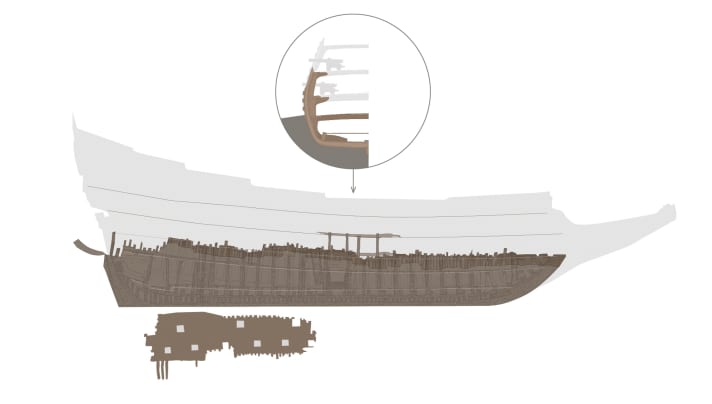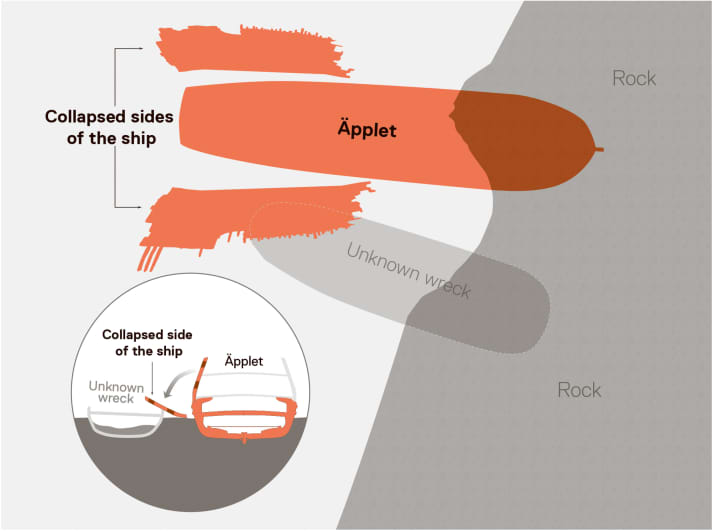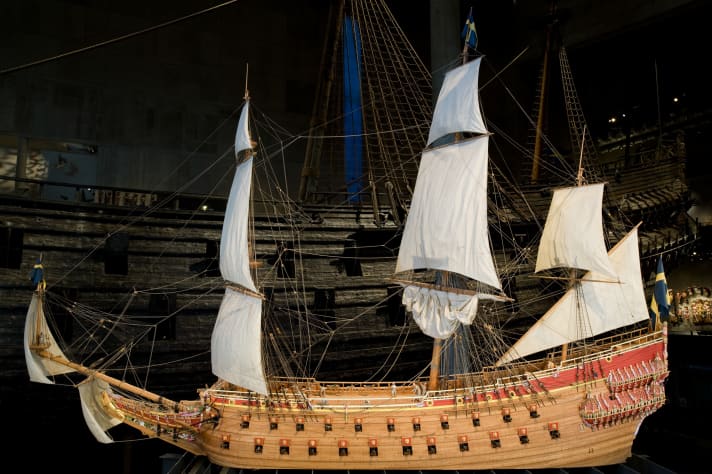
Marine archaeologists have identified a wreck of the Swedish sailing warship "Äpplet" off Stockholm. The huge shipwreck was discovered back in December 2021. It has now been confirmed that it is the sister ship of the "Vasa". Measurement data, technical details of the ship, wood samples and archive data confirm the identity of the warship. The "Äpplet" was launched in 1629, one year after the "Vasa". It was one of the largest seagoing ships of the time.
The wreck was discovered in a strait near Vaxholm, an island in the archipelago off Stockholm, by marine archaeologists from the Swedish Wreck Museum Vrak in co-operation with the navy. Parts of the ship's sides had fallen to the seabed, but the hull was preserved up to a lower gun deck. The fallen side walls had portholes on two different levels, which indicates a warship with two gun decks.

"Our pulse quickened when we saw how similar the wreck was to the 'Vasa'," recalls Jim Hansson, marine archaeologist at the museum. "Both the construction and the huge dimensions looked very familiar. The hope of finding one of the sister ships of the 'Vasa' was awakened in us."
"The dimensions, construction details, wood samples and archive material all pointed in the same direction," says Patrik Höglund, maritime archaeologist at the museum. And he concludes: "Surprisingly, we had found the sister ship of the 'Vasa', the 'Äpplet'."

Earlier finds turned out to be other ships
In 2019, the museum's marine archaeologists found two shipwrecks in Vaxholm that were thought to be the "Äpplet". However, the investigations at the time revealed that they were instead the "Apollo" and "Maria", two medium-sized ships from 1648. The archaeologists did not give up and continued their search.
In the case of the current find, however, the clues quickly became clearer. A thorough investigation in spring 2022 revealed ship details that were previously only known from the "Vasa". Several samples and analyses were also carried out. It turned out that the oak for the ship's timber was felled in Mälardalen in 1627 - in the same place as the timber from the "Vasa" just a few years earlier.
It sank at the beginning of its maiden voyage on 10 August 1628 after travelling only around 1,300 metres. The reason for the sinking in normal sea conditions was the serious structural instability. After being salvaged in 1961, she was restored and is now in the Vasa Museum in Stockholm issued.
The "Äpplet" was built slightly wider after the "Vasa" disaster. However, the design proved to be unsuccessful. The ship was declared unseaworthy in December 1658 and sunk near Vaxholm the following year in order to block the strait to protect it from enemies.

"Äpplet": decisive factor for further research
The discovery of "Äpplet" provides important new insights. "With 'Äpplet', we can add another important piece to the puzzle in the development of Swedish shipbuilding," explained Hansson. Only now can the differences in the designs of "Vasa" and "Äpplet" really be analysed.
"This will help us to understand how the large warships developed from the unstable 'Vasa' into seaworthy monsters that could control the Baltic Sea - a decisive factor in Sweden's rise to great power status around 1600," added Höglund.
